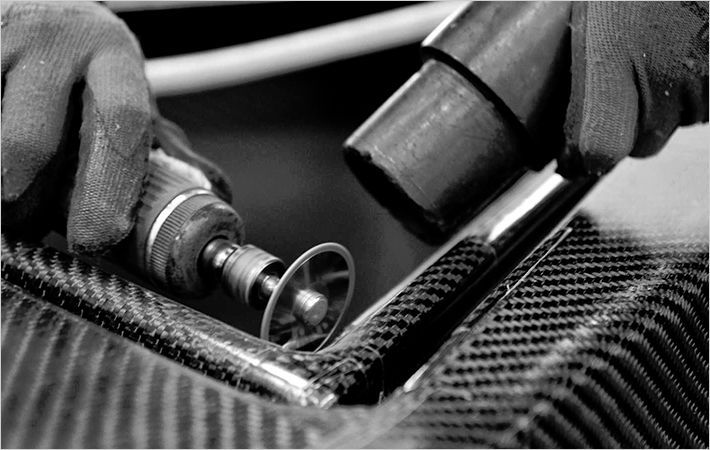In collaboration with KraussMaffei, Henkel – the world market leader for adhesives, sealants and surface treatment technologies – has developed a process for the manufacture of components based on glass or carbon fiber and using high-pressure RTM (HP-RTM) technology that creates a surface quality good enough for automobile exteriors.
Using a model of the light, high-strength carbon fiber roof segment of the Roding Roadster R1, this innovative production process is due to be presented at “K,” the world’s most important trade fair for the plastics and rubber industries, due to place from October 16 to 23 in Düsseldorf.
Lightweight construction technologies are gaining ever more importance in the automotive industry because they help reduce the weight of the overall vehicle, something that is becoming a necessity in the face of strict exhaust requirements and as an avenue for decreasing both fuel consumption and CO2 emissions.
Composite materials based on carbon or glass fibers combine lightness in weight with enormous strength, thus offering outstanding properties in relation to safety and crash behavior. Until now, there have been certain limitations in the use of lightweight components.
They are restricted in the degree to which they can meet the requirements of the automotive industry with respect to cycle times and level of automation. In particular, composites have been very rarely used for the external components of production vehicles, as the requisite post-treatment of the surface for subsequent painting has been too time-consuming and had to be performed manually.
With the strong support of Henkel, KraussMaffei – a leading manufacturer of machines for the manufacture and processing of plastics – has now succeeded in producing composite components in a fully automated process, that exhibit a surface quality suitable for immediate painting. This has become possible thanks to the development of Loctite MAX 3, a three-component polyurethane-based matrix resin system from Henkel that contains not only the resin and hardener but also a high-performance release agent.
Increased temperature resistance directly after demolding
This polyurethane-based matrix resin technology from Henkel is characterized by significantly faster curing compared to the epoxy resins usually used for the RTM (resin transfer molding) process. Due to its low viscosity, the resin penetrates the fiber material more easily and with less disruption, giving rise to shorter injection times and thus short cycle times in series production.
The outstanding toughness of Loctite MAX 3 also facilitates achievement of an optimized component structure. Henkel has likewise improved the temperature resistance of the PUR resin, taking Loctite MAX 3 to a level comparable with that of epoxy resins in relation to this particular property.

